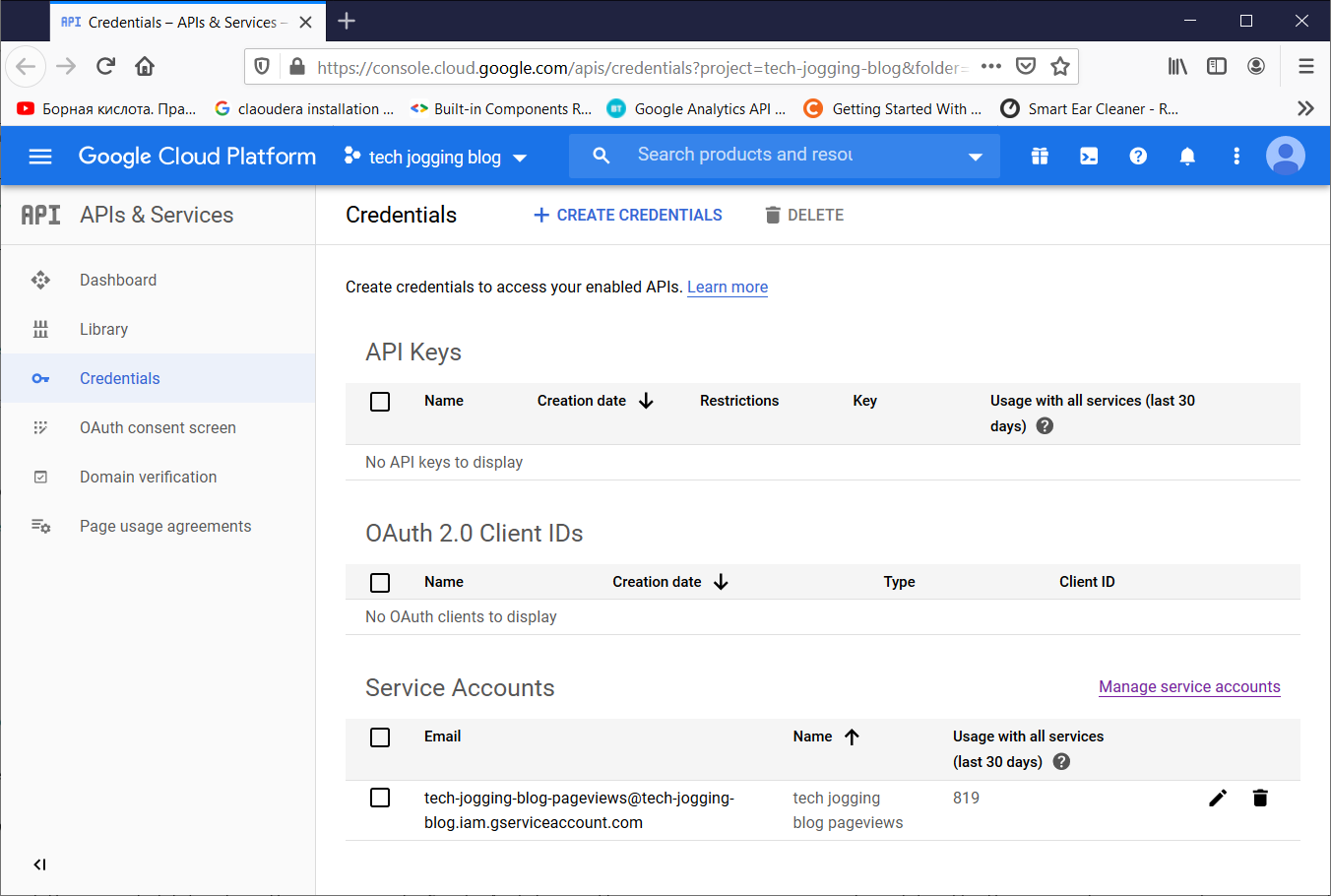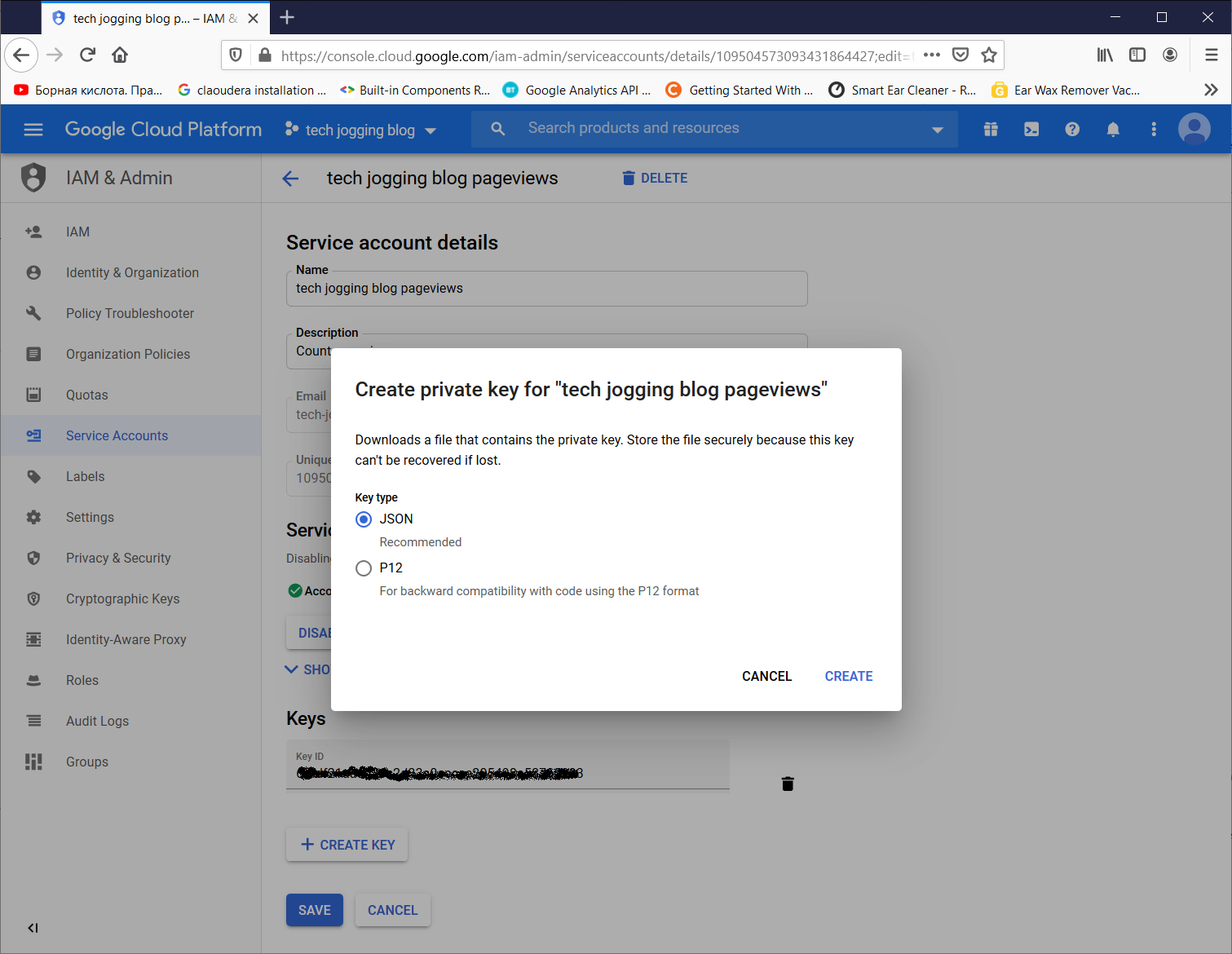Google Analytics requests authentication to access Google Universal Analytics data/reports. Implementation of Google Analytics can be done in both places client and server. Server APIs support a wide variety of languages and the authentication process is transparent for users. Javascript is a language to access Google Analytics APIs in client implementation. Also, to view Google Analytics in javascript, users have to be authenticated. The process of authentication includes a Google form to enter user credentials. It works perfectly for a set of scenarios but it doesn't work if we want to see pageviews in static web sites.
Starting on July 1, 2023, standard Universal Analytics properties stopped processing new data, and all customers will lose access to the Universal Analytics interface and API starting on July 1, 2024. The article can be still be used to retrieve data from Universal Analytics until July 1, 2024.
To solve an issue with authentication, we can use a Google Analytics token. A token allows bypass entering of credentials. It will add an extra step to generate a token and place it in a location accessible by your static web site. Google Analytics token has limited life; it is only 1 hour, so we need to renew our token every hour. It seems complicated but in fact not. It can be used a tool to generate tokens and push it in a static web site.
A sample is located in github repository. Static web site implementation is Pelican blog.
1. Create Google Analytics service account and extract json key file
- Go to Google Analytics Platform APIs and Services Credentials to create a Service account

- Create Key

2. Develop Generate Google Analytics token tool
The tool will use oauth2client library to run from_json_keyfile_name function from ServiceAccountCredentials service object. After getting a token, the token file will be updated on the static web site.
from oauth2client.service_account import ServiceAccountCredentials
# The scope for the OAuth2 request.
SCOPE = 'https://www.googleapis.com/auth/analytics.readonly'
# Defines a method to get an access token from the ServiceAccount object.
def access_token(key_file_path):
return ServiceAccountCredentials.from_json_keyfile_name(key_file_path, SCOPE).get_access_token()
if __name__ == "__main__":
key_file_path = 'tech-jogging-blog-98stj21aac52.json'
token_file_path = 'report_access.js'
with open(token_file_path, "w") as f_out:
token = access_token(key_file_path).access_token
token_code = 'var ANALYTICS_TOKEN = \'{}\';'.format(token)
f_out.write(token_code)
Generated token javascript file looks like. It contains a variable with token value.
var ANALYTICS_TOKEN = 'ya29.c.Ko4BzQdIsUMOFvVHh5O90tnJZvW3but0Ym-C9C1NhKEt3ihBKEk6AOQFp-Mm-MUzZiyLJsfNSD90vqeUm078fSeXl0NXUhWZKvY79BJhg33UB_crRmwDY3Xn98KaPTgi22y4_QFdRA0l3GiQeISkQcnEmb0P1Y_eCquWR-qtDWVy-IBDZRJph2j6otc64oxoqQ';
3. Develop javascript code to access Google Analytics
The code runs when Google Analytics APIs is loaded, then it is used the generated token to authorize access to Google Analytics, after a pageviews query is sent, and finally the received pageview value is assigned to an HTML control.
api.analytics.ready(function() {
/**
* Authorize the user with an access token.
*/
gapi.analytics.auth.authorize({
'serverAuth': {
'access_token': ANALYTICS_TOKEN
}
});
var pagePathFilter = 'ga:pagePath==' + window.location.pathname;
var report = new gapi.analytics.report.Data({
query: {
ids: 'ga:209816969',
'start-date': 'today',
'end-date': 'today',
metrics: 'ga:pageviews',
filters: pagePathFilter
}
});
report.on('success', function(response) {
document.getElementById('query-output').value = response.totalsForAllResults['ga:pageviews'];
});
report.execute();
});
4. Create a HTML file to show pageviews
<!DOCTYPE html>
<html>
<head>
<meta charset="utf-8">
<title>Google Analytics Pageviews Sample</title>
<script>
(function(w,d,s,g,js,fs){
g=w.gapi||(w.gapi={});g.analytics={q:[],ready:function(f){this.q.push(f);}};
js=d.createElement(s);fs=d.getElementsByTagName(s)[0];
js.src='https://apis.google.com/js/platform.js';
fs.parentNode.insertBefore(js,fs);js.onload=function(){g.load('analytics');};
}(window,document,'script'));
</script>
</head>
<body>
<h1>Google Analytics</h1>
<h3>Pageviews Counter</h3>
<textarea cols="10" rows="1" id="query-output"></textarea>
<script src='report_access.js'></script>
<script src='pageviews.js'></script>
</body>
</html>
5. Schedule Generate Google Analytics token tool to be run every hour
It can be done in many different ways, for example, Linux - cron, Windows - Task Scheduler, Synology DSM - Task Scheduler.
 tech jogging
tech jogging
Comments
comments powered by Disqus